The starting point for nearly all infertility assessments is a baseline pelvic ultrasound. This allows physicians to locate any pelvic pathologies that pose a risk of negatively affecting fertility and early pregnancy. Later in the process, ultrasound again becomes a key tool during treatment — particularly when determining response to ovarian stimulation, identifying ovarian position for oocyte retrieval and evaluating endometrial thickness prior to embryo transfer.
Ultrasound makes it easy to offer preliminary infertility assessments for concerned patients.
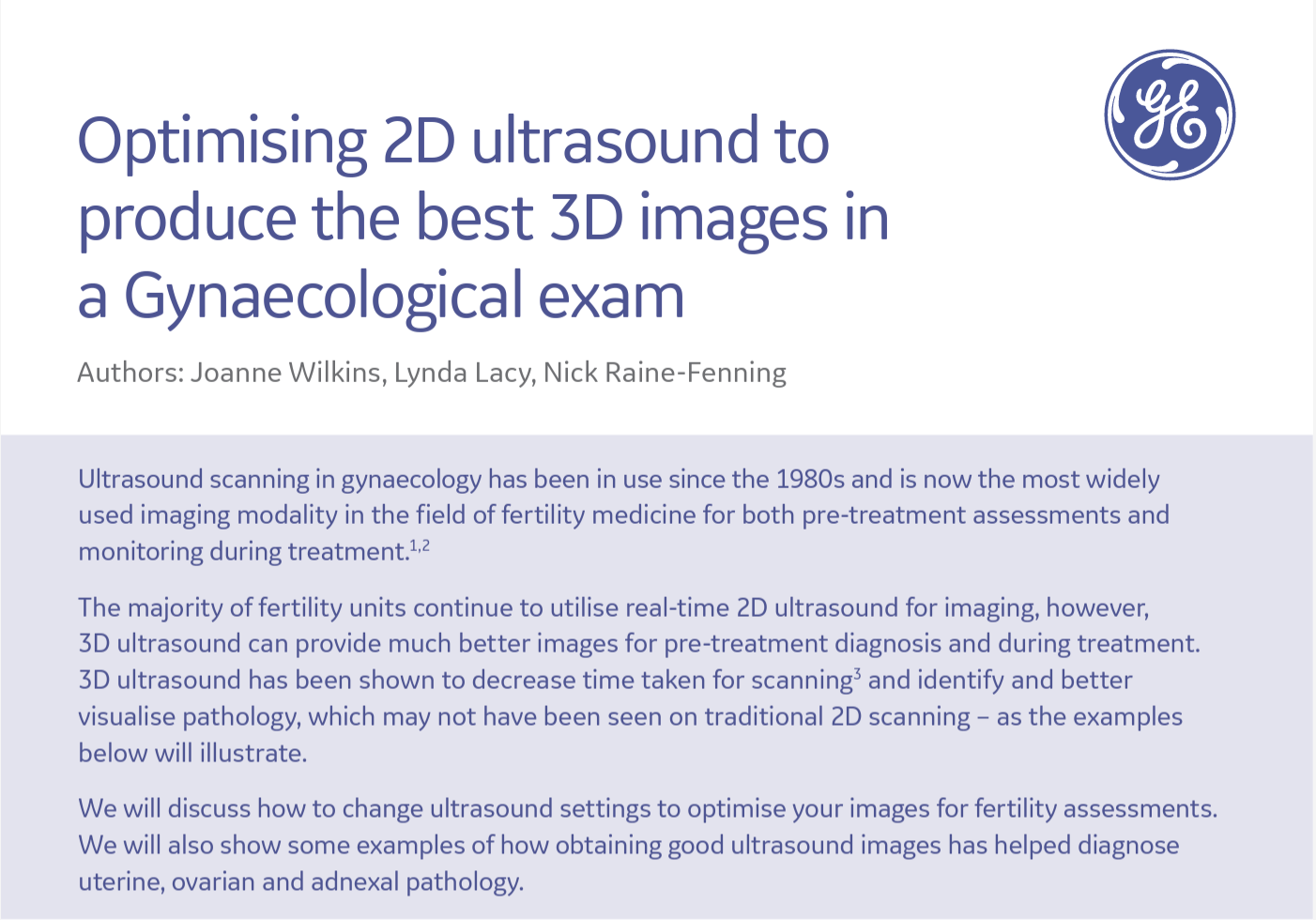
Learn more about optimizing 2D ultrasound in GYN exams here.
How To Begin Assessing Infertility
The first organ (or anatomy) to be examined is usually the endometrium as well as the uterus including the uterine cavity. Measurements of endometrial thickness, endometrial volume and endometrial vascularity all help to form a complete picture. A combination of 3D ultrasound and Power Doppler has been shown to provide a better quantification of vascularity than 2D ultrasound.
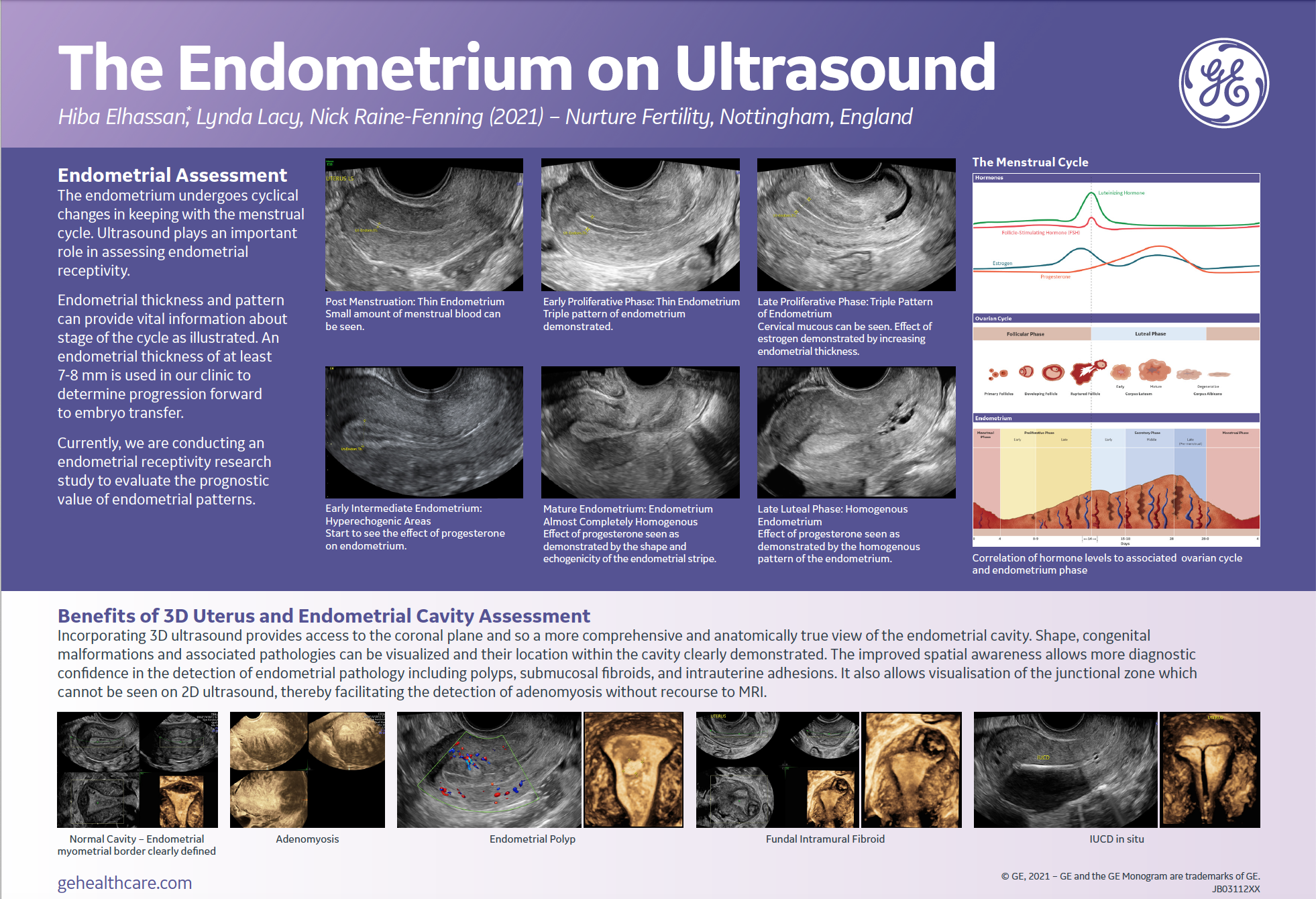
The junctional zone, a layer of inner myometrium surrounding the endometrium, also requires assessment; it has been found to affect fertility related to local vascular and perfusion changes. Research reported by Human Reproduction Update explains that this area, which has received attention in fertility assessments in the last few years, shows more prominent features when visualized with 3D ultrasound.
Other potential causes of infertility in patients include congenital uterine anomalies, where the embryological ducts form abnormally. This can result in uterine septation or lead to a bicornuate or unicornuate uterus, which may cause fertility difficulties. Some uterine anomalies are acquired — polyps, submucosal or isthmic fibroids, adenomyosis and intrauterine adhesions may develop following trauma. Secondary infertility can also stem from caesarean scar if bleeding from the scar area interferes with successful implantation, as demonstrated in a case report published in Acta Medica Lituanica. Some of these can be treated with a quick excision through the vaginal canal, which greatly improves fertility.
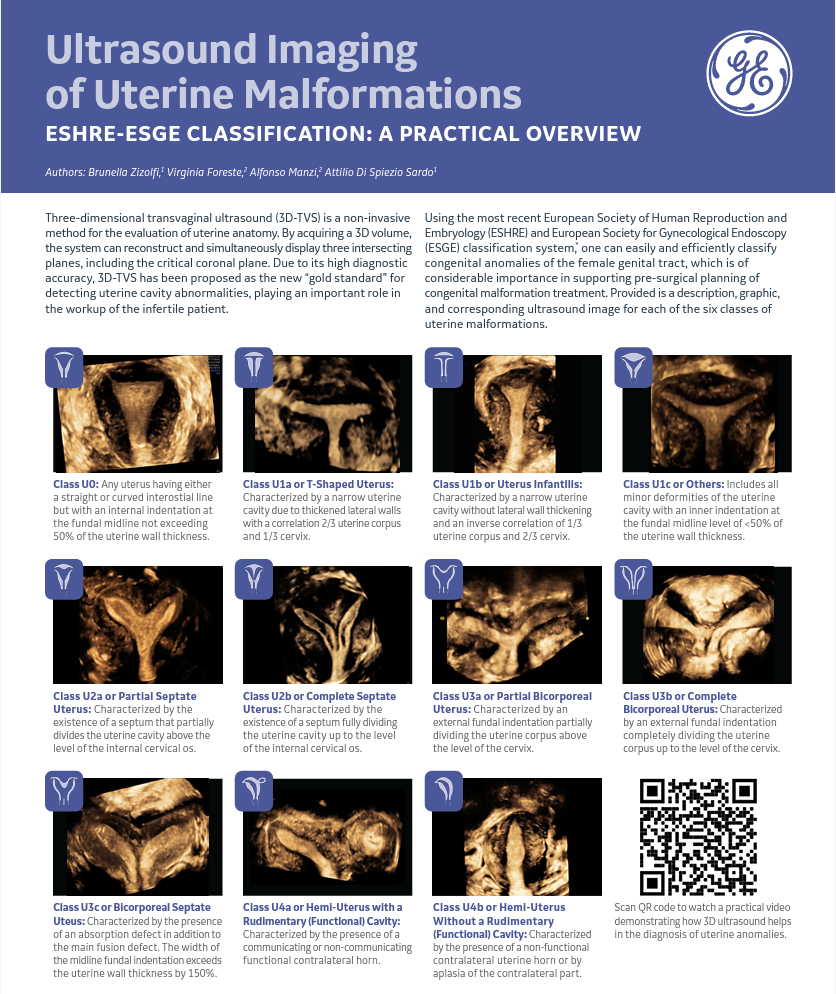
Download Uterine Malformations - ESHRE-ESGE Classifications poster here.
The ovaries must also be assessed for pathologies such as complex cysts, tumors and signs of polycystic ovarian syndrome (PCOS), all of which may affect fertility. When measured, ovarian volume can help to determine if ovarian function and reserve are normal or compromised. Research published in Facts, Views and Vision reports that ovarian reserve is considered to be low when ovarian volume is 3cc or smaller. Using a 3D transvaginal ultrasound approach can increase accuracy.
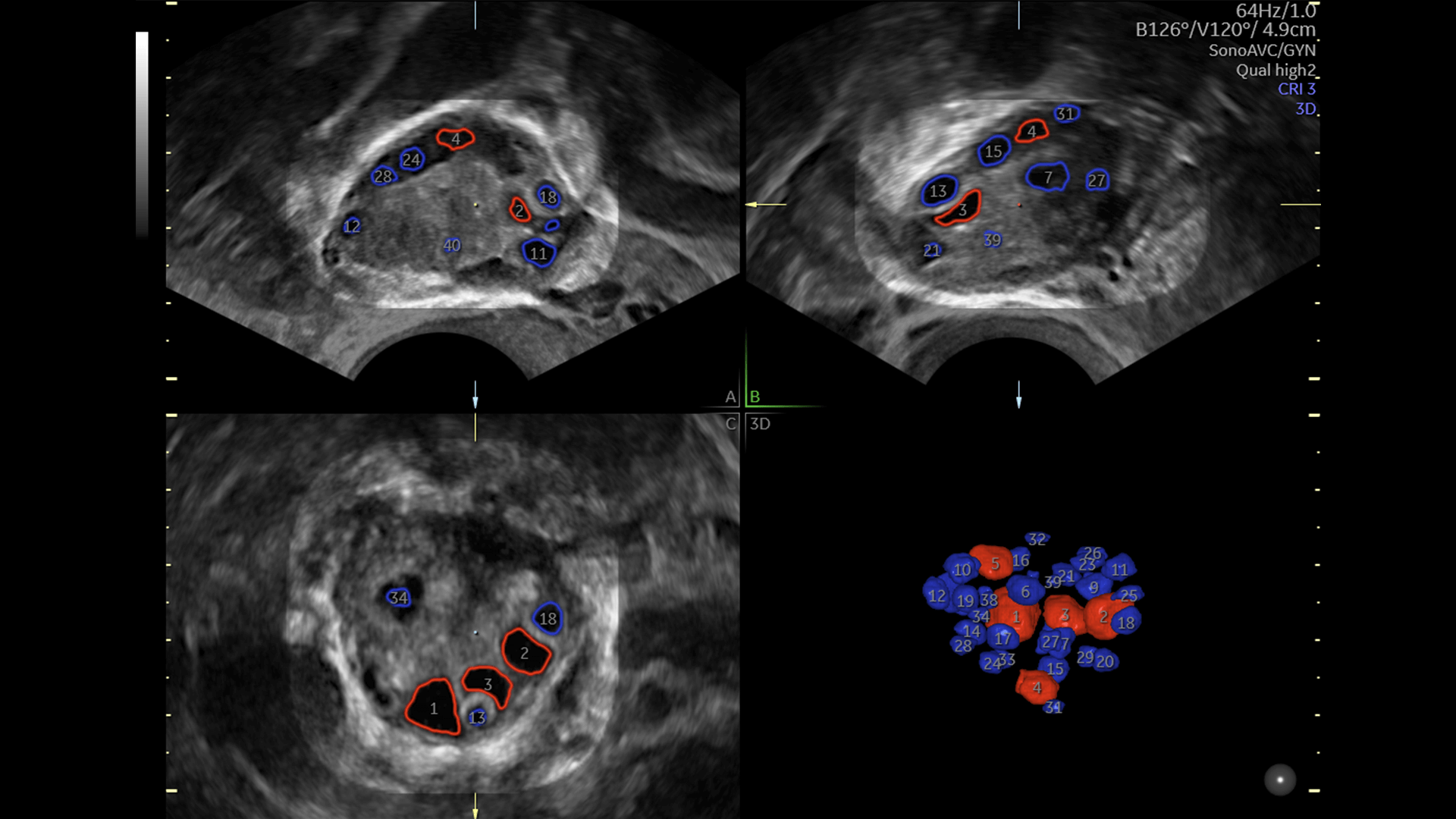
SonoAVC™antral2.0 Sonography-based Automated Volume Count automates ovarian reserve assessment
Determining the mobility and location of the ovaries is also key — mobility of the ovary can be determined by placing light to moderate transvaginal transducer pressure directly on the ovary and watching to see if the ovary slides easily away or not. An immobile ovary can indicate adhesions from endometriosis, previous infection or surgery.
Additionally, tubal disease is one of the most common causes of infertility symptoms. Treatment options for tubal factor infertility include reconstructive surgery and IVF. IVF success rates have steadily increased over the last decade and now exceed those that can be achieved with surgery. In addition, ectopic pregnancy rates are considerably higher after tubal surgery compared with IVF. Consequently, IVF has become the treatment favored for tubal factor infertility.
How 3D Ultrasound Can Improve Patient Care
Plenty needs to be evaluated during fertility assessments, and completing one efficiently can hinge on having the right tool. 3D and transvaginal ultrasound technology has advanced significantly over the last few years — it now allows for imaging comparable to conventional hysteroscopy, which was previously considered to be the gold standard in uterine assessment.
3D ultrasound can improve patient care in many ways. Its non-invasive, accurate and highly reproducible nature can make it more patient-friendly than other procedures. It also has the benefit of being non-ionizing, low in cost and very accessible, even allowing for "one-stop" fertility tests.
The Benefits of One-Stop Fertility Tests & Assessments for Your Practice
Infertility tests and assessments often add stress for patients who hope to conceive, and the uncertainty and delay involved with lengthy and repetitive processes can reduce the chances of a successful treatment. One-stop fertility testing, as explained in Facts, Views and Vision in OBGYN, can offer a quicker and easier experience. A one-hour visit is typically long enough to complete an evaluation with 3D transvaginal ultrasound and Doppler as well as run a semen analysis. Both results are then ready to be discussed with the physician at the end of the appointment.
The objective of the transvaginal ultrasound is to assess the uterus, cervix, endometrium, fallopian tubes and ovaries for position, size and morphology. Gross abnormalities of the uterus and ovaries must be excluded and endometrial receptivity must be determined. Tubal patency can be assessed using hysterosalpingo contrast sonography HyCoSy, which has been found to be more comfortable for patients than X-ray hysterosalpingography. (HyCoSy is not cleared in the United States and may not be available in all other countries.) These ultrasound results are combined with hormone level testing, allowing for a treatment plan based on a comprehensive overview of the patient's fertility.
Cutting-Edge Technology and Great Patient Care
According to the study from Facts, Views and Vision in OBGYN, the average cost of this one-stop shop method for infertility testing is two-thirds lower than the conventional multiple-visit work-up. It can also save both the couple and the clinician up to 18 weeks, which would have otherwise been necessary for arranging appointments and compiling results.
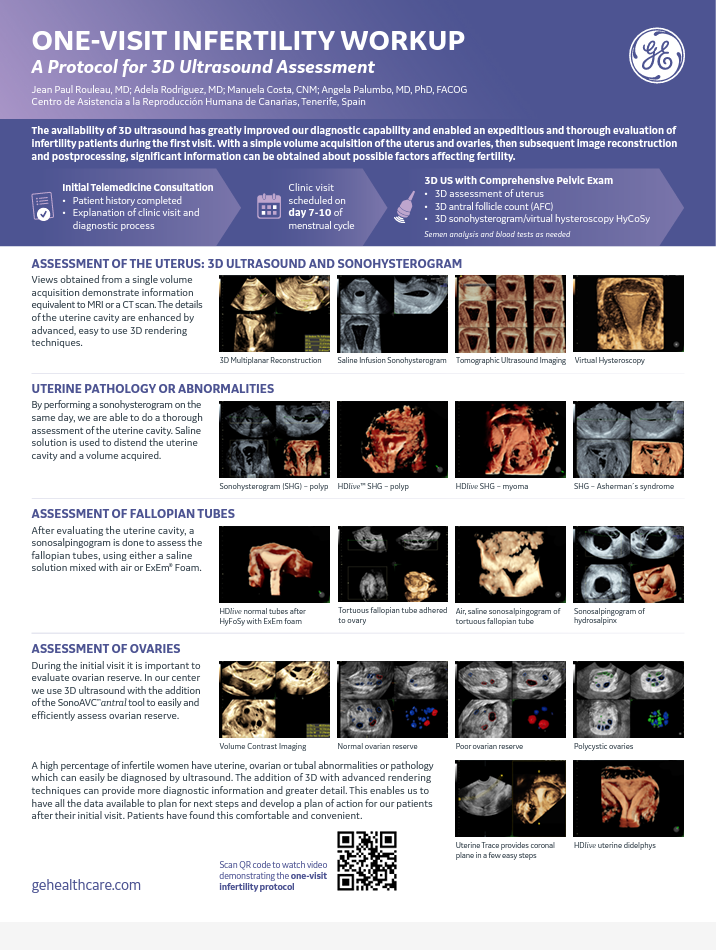
Download the one-visit Infertility Work-up performed by Prof Palumbo et al. here.
The one-stop fertility test — utilizing 3D ultrasound — provides a non-invasive method for evaluating fertility and the reproductive organs while saving time, lowering costs and improving patient satisfaction.





